The All In National Inventory 2.0: The State of Our Field
The All In National Inventory 2.0 survey captures the experiences of organizations participating in multisector data sharing. DASH, along with partners from the All In network and data.org’s Rising Equitable Community Data Ecosystems (RECoDE) team produced and disseminated this survey in 2021. The results have just been published. Below, we share some of our takeaways and wonder what some of yours are.
The Landscape of Data Sharing
There is no one data-sharing “look.” A collaboration may sprawl across states or tuck into a neighborhood. Their challenges might be urban or rural, their focus youth or elders, their actions preventative or proactive.
Despite this diversity, data-sharing collaborations share similar end goals: to develop efficient, equitable, and ethical processes for acquiring and using data to meet the needs of community members.
Curious about the paths and pacing organizations are setting to get to those goals, in 2021 we conducted a national inventory to develop a snapshot of data sharing across health sectors. The results are in, and you can find them in our report titled “State of the Field of Multisector Data Sharing for Community Health: Report of the All In National Inventory 2.0.”
Equity in Focus
As astute readers may have suspected, the National Inventory 2.0 has a precedent; the first National Inventory was conducted two years earlier, in 2019. An important difference between the two efforts was that, in 2021, our collaborators included data.org’s project team Rising Equitable Community Data Ecosystems (RECoDE), and their partners.
Thanks to their partnership, the survey included questions about equitable data sharing practices, and was disseminated to a wider array of potential respondents this time around.
All in all, the National Inventory 2.0 asked four categories of questions:
Why are organizations sharing data across sectors?
What are the features of the organizations’ data-sharing ecosystems?
What progress are organizations making toward their goals? and
How is equity centered in data-sharing efforts—specifically, how are community members valued and included in decision-making around sharing data?
Fertile Ground
The Inventory collected responses from 261 individuals involved in data collaborations, representing 249 organizations in 229 collaborations and spread across 36 states and territories.
Among respondents, data sharing is a fairly new practice: almost 40% of respondents are in very young collaborations—two years or younger—and many are members of community-based organizations, which can tend to have lower organizational capacity than other sectors.
Even so, we found that the results overall indicate an encouraging level of comfort with the groundwork needed for multisector data collaboration: most respondents know the benefits data sharing can bring them and their communities and have established cultures of shared understanding with their collaborators.
Room to Grow
Where is room to grow as a field is inclusion of community voice—that equity piece. The Inventory asked participants about the extent to which community members are involved in data-sharing processes from start to finish; that is, planning data initiatives, collecting data, determining access, analyzing data, interpreting findings, developing recommendations, and reporting and disseminating findings.
The report also asked about the level of inclusion at each of those stages. Are community members asked for occasional feedback? Regularly consulted? Invited to make decisions? Or perhaps they are told of activity after it happened, or there is not much communication at all.
While most organizations did involve community members as advisors or active engagers at the start (planning) and near the end (developing recommendations) of data-sharing, other phases (collecting, interpreting, determining access, analyzing, reporting, and disseminating) fell off.
And the percentage of organizations that invited people with lived experience to be decision-makers never exceeded 13% at any stage of the process.
Click to expand image
There is certainly interest, though, and potential for growth. At every stage of the data life cycle except for analyzing data, over half of respondents reported that their collaborations involved people with lived experience in some way, even if that meant just informing community members of the activity – so the will and the foundation are there to build involvement.
Responses indicated another area for growth: financial sustainability. Grants remained the main source of funding for data-sharing initiatives, and about a third of collaborations did not have an encouraging answer for how they might continue this work in the future. Moreover, while the vast majority of respondents implicated the importance of data, far fewer reported sufficient technology funding or professional development around data.
Seeds of Systems Change
The Inventory describes methodology and tallies results – but stops short of offering implications or recommendations. We hope readers may take what is useful to them from the report to inspire and inform their work.
The insight we gleaned from the Inventory served as a foundation for more responsive, respectful, and effective DASH programming, such as our LAPP Round Two and Asset-Based Community Development programs in 2022.
The findings also helped shape the structure and priorities of our current funding opportunity, just getting underway: the Incubator. The Incubator is a unique opportunity focused on peer networking, mentor support, co-design between grantee and community as well as between grantee and grantor, and the intentional embedding of equity in data ecosystems.
What about you? What stands out to you as you read? How might you use this snapshot going forward? If you are involved in a data-sharing collaboration, how does your experience fit among the results? The report is here, for you to read, share, and reflect on:


